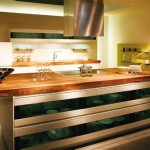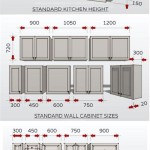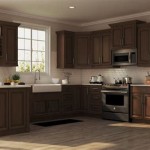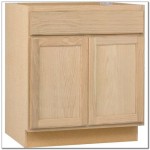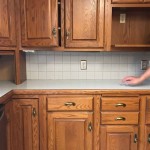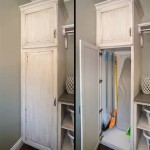How Wide Should Floating Kitchen Shelves Be?
Floating kitchen shelves have emerged as a popular design element in modern kitchens, offering a blend of aesthetic appeal and functional storage solutions. Determining the appropriate width for these shelves is crucial for both their visual integration into the kitchen space and their ability to safely and effectively support various items. Several factors influence the ideal width, including the intended use of the shelves, the overall kitchen design, the available wall space, and the materials and hardware used in their construction.
The width of a floating shelf, often referred to as its depth when discussing shelves, is the measurement from the wall outward. This dimension impacts the shelf's storage capacity, stability, and how it interacts with the space around it. A shelf that is too narrow may not adequately accommodate the intended items, while a shelf that is excessively wide can appear bulky, obstruct workflow, and potentially risk structural integrity, particularly with heavier loads.
Considering Intended Use and Load Capacity
The primary consideration for determining the ideal width of floating kitchen shelves is their intended use. Shelves designed to hold lightweight decorative items, such as small plants, picture frames, or decorative bowls, can be narrower than shelves intended to support heavier items like stacks of plates, cookware, or appliances. Therefore, a thorough assessment of the items intended for storage is essential. Consider the weight and dimensions of these items to ensure the shelves can comfortably accommodate them without appearing overcrowded or posing a safety risk.
Load capacity is directly correlated with shelf width. Wider shelves, especially those constructed from less dense materials, are more susceptible to sagging or bowing under heavy loads. The structural integrity of the shelf, including the type of wood or composite material used and the support system, must be considered in relation to the anticipated weight. Solid hardwood shelves, for example, generally offer superior load-bearing capabilities compared to shelves made from particleboard or MDF.
Furthermore, the type of hardware used to mount the shelves significantly impacts their load capacity. Heavy-duty floating shelf brackets, concealed supports, or metal rods embedded within the shelf's structure can provide the necessary reinforcement to support heavier items. These supports should be appropriately spaced and securely anchored to the wall studs to maximize their effectiveness. Ignoring weight considerations can lead to shelf failure, damage to stored items, and potential injury.
Balancing Aesthetics with Functionality in Kitchen Design
The width of floating kitchen shelves must also be carefully considered in the context of the overall kitchen design. The shelves should complement the existing cabinetry, appliances, and other architectural elements, creating a cohesive and visually appealing space. The width should be proportional to the wall space available and the scale of the kitchen. Overly wide shelves in a small kitchen can visually overwhelm the space and make it feel cramped, while excessively narrow shelves in a large kitchen may appear insignificant or inadequate.
Furthermore, the positioning of the shelves relative to other kitchen features, such as countertops, backsplashes, and windows, influences the optimal width. Shelves positioned above countertops or near appliances should be wide enough to provide convenient access to frequently used items but not so wide that they obstruct workflow or create a safety hazard. Similarly, shelves placed near windows should be carefully sized to avoid blocking natural light or interfering with window operation.
The desired aesthetic style also plays a role in determining the ideal shelf width. Minimalist kitchens often feature narrower shelves with clean lines to emphasize simplicity and openness. Rustic or farmhouse-style kitchens may incorporate wider, thicker shelves made from reclaimed wood to create a more textured and organic look. The choice of shelf width should align with the overall design theme to achieve a harmonious and balanced aesthetic.
Open shelving, by its very nature, puts the contents on display. Thoughtful curation of what is placed on the shelves is important. Wider shelves can create more visual clutter if filled with a disorganized assortment of items. The width should be chosen in conjunction with a plan for how the shelves will be styled and maintained to ensure they contribute positively to the kitchen's overall aesthetic.
Practical Considerations for Installation and Space Management
Installation considerations are crucial when determining the appropriate width of floating kitchen shelves. The type of wall construction, the location of wall studs, and the accessibility of electrical wiring or plumbing can all influence the installation process and, consequently, the maximum feasible shelf width. It is essential to locate the wall studs before installing any floating shelves, and the supports should be securely anchored to these studs for maximum stability and load-bearing capacity. If wall studs are not ideally located, additional framing or reinforcement may be necessary to ensure a secure and stable installation.
Space management within the kitchen is another important factor to consider. The width of the shelves should be carefully planned to avoid obstructing walkways, doorways, or other areas of high traffic. Shelves that protrude too far into the room can create bottlenecks and make it difficult to navigate the space comfortably. Consider the flow of movement within the kitchen and ensure that the shelves are positioned in a way that does not impede this flow.
The depth of the countertops should also be factored into the decision-making process. A general guideline is that floating shelves above countertops should be no deeper than the countertop itself, or slightly less. This prevents the shelves from feeling overwhelming and maintains a sense of openness. In situations where space is limited, consider using shallower shelves positioned higher up on the wall to maximize storage without sacrificing valuable workspace.
Accessibility is paramount. Shelves placed too high or too deep can be challenging to reach, especially for individuals with limited mobility or shorter stature. When planning the shelf width, consider the ergonomic factors and ensure that the shelves are easily accessible for all users. It may be necessary to incorporate lower shelves or alternative storage solutions for frequently used items to ensure convenient and safe access.
Regulations and building codes might also dictate certain restrictions on shelf dimensions or installation requirements, particularly in new construction or renovation projects. Consulting with a qualified contractor or building inspector can help ensure that the shelf design and installation comply with all applicable regulations and safety standards.
Finally, consider the long-term flexibility of the shelves. Will the storage needs of the kitchen change over time? Choosing an adaptable shelf width that can accommodate a variety of items and configurations can provide greater flexibility and longevity. Adjustable shelves, or shelves that can be easily reconfigured, can be a valuable asset in kitchens where storage needs are likely to evolve.
Ultimately, the ideal width for floating kitchen shelves is a balance between functionality, aesthetics, and practicality. Careful consideration of these factors will help create a kitchen that is both beautiful and efficient.

Diy Kitchen Floating Shelves Lessons Learned Angela Marie Made

Diy Kitchen Floating Shelves Lessons Learned Angela Marie Made

Kitchen Ideas Floating Shelves Hurd Honey

Details On Our Floating Kitchen Shelves Emily A Clark Open Diy Renovation

15 Pros Cons Of Floating Kitchen Shelves Vs Cabinets In 2024 Grace My Space

How To Build Diy Floating Shelves For The Kitchen

Floating Shelves Kitchen Wood Farmhouse

How To Install Diy Floating Shelves We The Dreamers

Hanging Floating Shelves In Our Kitchen Young House Love
Pros Cons Of Floating Kitchen Shelves Vs Cabinets Vigo Blog Bathroom And Shower Ideas
Related Posts

